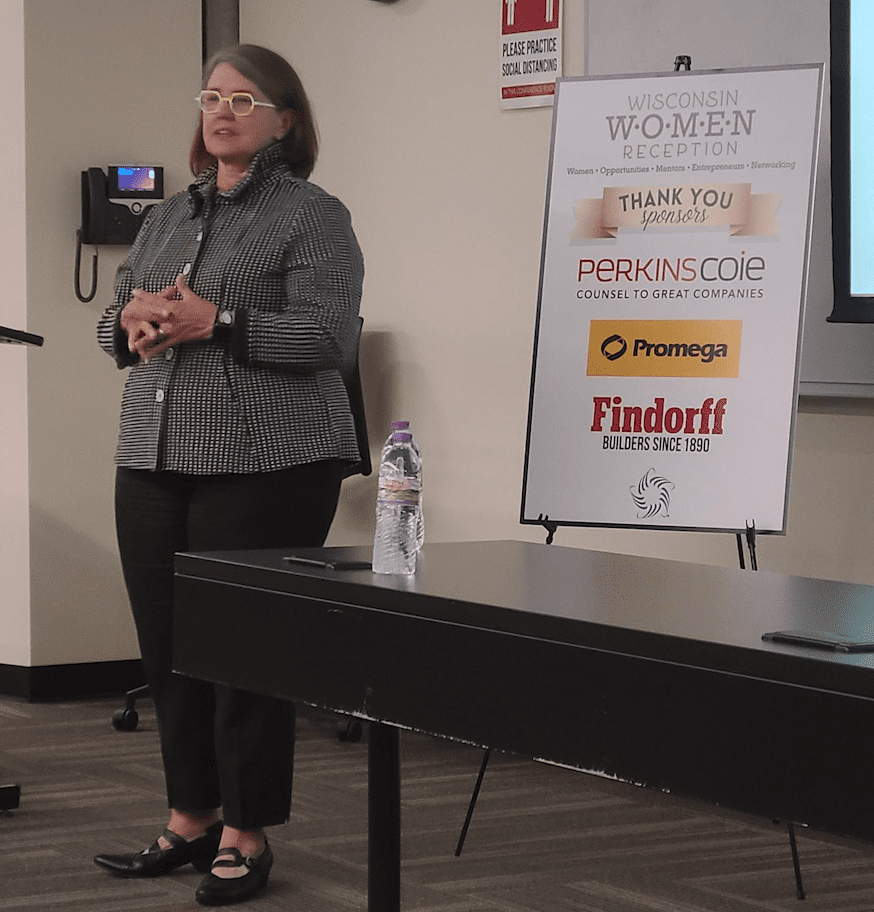Dr. Susan Turney, CEO of Marshfield Clinic Health System, expects the state’s rural health workforce shortage will only get worse in the coming years.
 “We do not have enough health care providers right now to manage our patient care, and I will tell you, it’s not going to get better. Because the pipeline is not there,” she said during the recent Wisconsin WOMEN Reception event hosted by the Wisconsin Technology Council in Madison. “We have a real crisis.”
“We do not have enough health care providers right now to manage our patient care, and I will tell you, it’s not going to get better. Because the pipeline is not there,” she said during the recent Wisconsin WOMEN Reception event hosted by the Wisconsin Technology Council in Madison. “We have a real crisis.”
MCHS employs more than 1,200 care providers with locations primarily in the northern parts of the state. Turney said over 93 percent of people completing their training in medicine prefer to work in a community with over 50,000 people. Most of the health system’s facilities are in communities with fewer than 2,000 residents, making it difficult to bring in new hires.
Although the COVID-19 pandemic has exacerbated the issue, Turney noted it’s not a new problem. She says academic centers “need to reinvent themselves” to address the worsening shortage.
“I don’t know how we’re going to get out of this mess. We’re going to be short thousands of physicians in 20 years. Thousands. And you know what, over half the docs in the country right now are over 55,” she said. “They’re retiring. They’ve had it, with all the changes that have happened. They just emotionally cannot manage it anymore.”
She praised the “innovative, creative and astounding” work being done by rural care providers in the face of worker shortages and other challenges, such as a lack of transportation infrastructure and broadband internet access.
“Our staff are so committed. I mean, like not taking vacation days. We have 1,000 nurses that have not used their vacation days this year,” she said.
Along with the long-term challenge of filling positions in rural Wisconsin, Turney also highlighted the more immediate problems posed by the COVID-19 pandemic.
The health system’s service area covers counties with some of the lowest vaccination rates in the country. She says the system has more patients hospitalized and on ventilators now than in the initial surge of the pandemic.
She also explained the numbers of patients afflicted with the virus “are higher than reflected in the data” because the ability of providers to perform at-home care and monitoring has improved.
“It’s still pretty bad in many parts of the country. And we’re not expecting our surge to peak for a month or two yet, into November, maybe even December,” she said. “I think there’s hope, and we’ve learned a lot … We still have a tough journey here. There’s no question about it.”
Telemedicine options have helped MCHS keep up with patient demand during the pandemic. Before COVID-19 hit, about 1 percent of visits at the health system were done through telehealth. That number shot up to 35 percent during the previous peak, and she said “we’ve been able to keep a high level” of these services as the pandemic has continued.
Telehealth represents a promising avenue for addressing rural shortages, she said, particularly certain types of care such as behavioral health.
“It’s not going to cost more to use technology. You don’t need more people, you just need more service. So I think that that can make a huge, huge difference,” she said.



